
AAPD Webinars
AAPD 2020 NashVirtual - Continuing Education
- Registration Closed
AAPD is offering CE for the courses at NashVirtual that you could not attend. Here, you have the opportunity to purchase and earn CE hours. Purchase the entire Annual Session package here!
-
Contains 3 Component(s), Includes Credits Recorded On: 05/23/2020
This lecture will discuss common drugs abused by children and adolescents, and provide the attendee with approaches in identifying and managing patients with opioid and substance use disorders in the pediatric dental practice. Logic for using, signs, symptoms, behaviors, and effects on the developing brain will be highlighted. Dental treatment recommendations, brief interventions, effective referral protocol, and resources for family members will be discussed. Be sure to listen to Part 2 of this lecture on Saturday, May 23! Learning Objectives: Describe alcohol and drug use in early adolescence with progression to opioid and substance use disorders in late adolescence. discuss the neurocognitive effects of addictive substances on the developing adolescent brain. discuss patterns, trends, epidemiology, and contributing factors to opioid and other substance use \ abuse among the child and adolescent population highlight similarities, differences, and discuss challenges of adolescents with co-occurring substance use and psychiatric disorders. discuss how the pediatric dental practitioner and staff can identify and manage substance use and withdrawal syndrome behaviors in patients. recognize and deliver safe dental procedures for children and adolescents who are actively using alcohol and \ or other drugs; or are currently receiving treatment for opioid and substance use disorders. demonstrate and provide the pediatric dentist with brief interventions, referrals and resources for the family.
This lecture will discuss common drugs abused by children and adolescents, and provide the attendee with approaches in identifying and managing patients with opioid and substance use disorders in the pediatric dental practice. Logic for using, signs, symptoms, behaviors, and effects on the developing brain will be highlighted. Dental treatment recommendations, brief interventions, effective referral protocol, and resources for family members will be discussed.
Be sure to listen to Part 2 of this lecture on Saturday, May 23!
Learning Objectives:
- Describe alcohol and drug use in early adolescence with progression to opioid and substance use disorders in late adolescence.
- discuss the neurocognitive effects of addictive substances on the developing adolescent brain.
- discuss patterns, trends, epidemiology, and contributing factors to opioid and other substance use \ abuse among the child and adolescent population
- highlight similarities, differences, and discuss challenges of adolescents with co-occurring substance use and psychiatric disorders.
- discuss how the pediatric dental practitioner and staff can identify and manage substance use and withdrawal syndrome behaviors in patients.
- recognize and deliver safe dental procedures for children and adolescents who are actively using alcohol and \ or other drugs; or are currently receiving treatment for opioid and substance use disorders.
- demonstrate and provide the pediatric dentist with brief interventions, referrals and resources for the family.
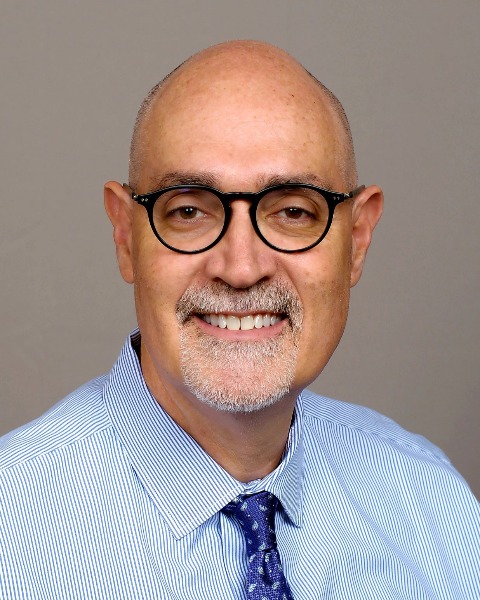
Randall Lout
DDS, MS
Dr. Lout attended Oklahoma State University and Southwestern Oklahoma State University School of Pharmacy. He received his Doctor of Dental Surgery degree from University of Oklahoma College of Dentistry. After dental school, he completed a pediatric dental residency and Master of Science degree at the University of Minnesota School of Dentistry. As part of the residency, his hospital training was at the University of Minnesota Hospitals and Hennepin County Medical Center.. Following his training, he was awarded the Graduate Student Research Award by the American Academy of Pediatric Dentistry. Pursuing further education later in life, he completed a Master of Science in Addiction Counseling program at Grand Canyon University followed by licensure in substance abuse counseling. He is experienced in working with adolescents and health care professionals. Dr. Lout is a Diplomate, American Board of Pediatric Dentistry and a Fellow, American Academy of Pediatric Dentistry. He has served on the Evidence-Based Dental Committee, Pediatric Oral Health Research and Policy Center of the American Academy of Pediatric Dentistry and is currently Chair, Council on Clinical Affairs. Dr. Lout is in private practice in Phoenix and Mesa, Arizona.
-
Contains 3 Component(s), Includes Credits Recorded On: 05/22/2020
Join 3 speakers as they give 45 minute presentations about their topic: - Practice Management in Pediatric Dentistry - Dr. Flavia Lamberghini - Role of the Pediatric Dentist in Sleep Disorder Breathing: Screening and Treatment Planning Made Easy - Dr. Audrey Yoon - Scaling Greatness- The Importance of Great Leadership - Dr. Oshmi Dutta
Join 3 speakers as they give 45 minute presentations about their topic:
- Practice Management in Pediatric Dentistry - Dr. Flavia Lamberghini
- Role of the Pediatric Dentist in Sleep Disorder Breathing: Screening and Treatment Planning Made Easy - Dr. Audrey Yoon
- Scaling Greatness- The Importance of Great Leadership - Dr. Oshmi Dutta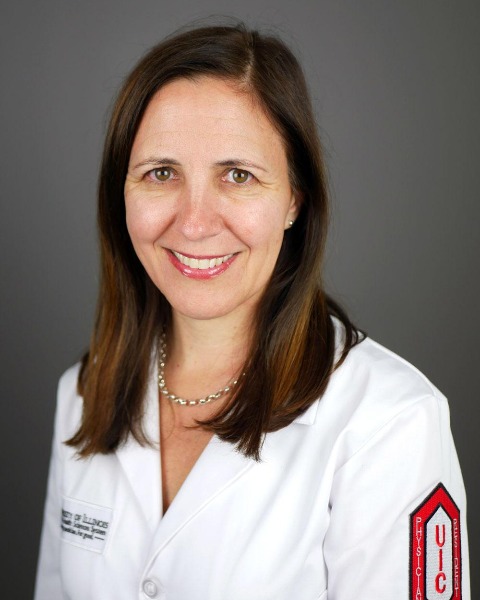
Flavia Lamberghini
Speaker
Flavia Lamberghini DDS, MS, MPH, FAAPD is a Clinical Assistant Professor at UIC Pediatric Dentistry and directs Apple Dental Care (ADC) the largest private pediatric dental practice in Illinois. Apple Dental Care is a UIC affiliated clinic involved also in education and community programs. Dr Flavia is married and have two children.

Audrey Yoon
Speaker
Dr. Audrey Yoon is a dual trained orthodontist and pediatric dentist. She completed her orthodontic,pediatric and craniofacial training at the University of California, Los Angeles. She obtained a masterdegree completing extensive research in obstructive sleep apnea (OSA). Dr. Yoon is an adjunct assitant professor and collaborative team member at Stanford Medical Center in the sleep apnea research. She has worked on a pioneering technique, performing maxillary distraction osteogenesis for the treatment of OSA and has co-authored chapters on this subject in several leading textbooks. She has created an interdisciplinary rotation program between Stanford Sleep Surgery and the University of Pacific Orthodontic Residency Program to teach the importance of airway to future orthodontists. She also created Pediatric Dental Sleep Mini-residency program at Tufts University to train the dentists properly with the evidence-based methods and protocols. Currently her active areas of research include craniofacial growth modification, surgery-first approach of maxillomandibular advancement surgery technique, and the genomic study to identify genetic anatomical factors relating to OSA.
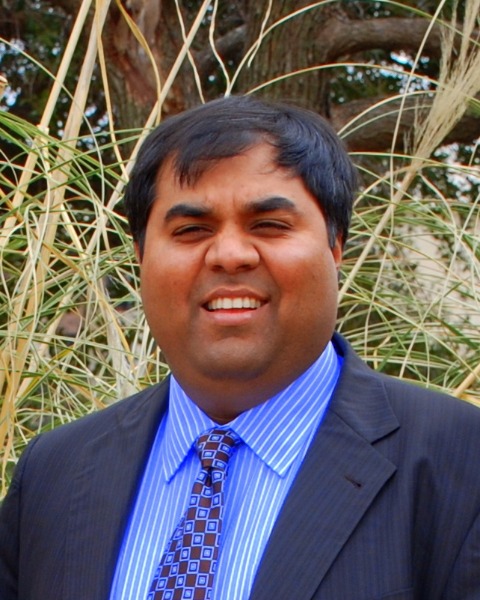
Oshmi Dutta
Speaker
As a Pediatric Dentist and business owner, Dr Dutta has experienced the value of branding in his Dental and Non-Dental Businesses. There is a constant evolution in the business environments that have to be addressed by practices as well. Innovation and redefinition of your experience and value proposition are essential in today's marketplace. Adherence to your values and mission with a strong culture confirm success for forward-looking practices. He constantly compares the similarities in consumer-facing businesses. There is a lot to be learned in the steps to success from great brands!
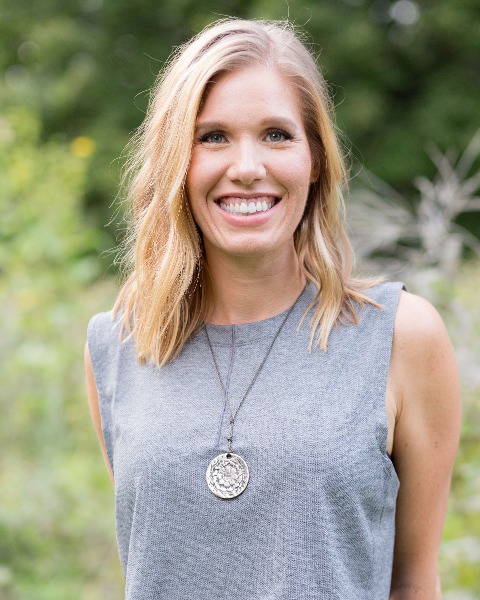
Karianne Michelle
Speaker
Karianne is a Chicago-based communications professional, facilitator, and wellbeing advocate with 15 years of brand leadership experience in the creative industry. Blending her industry experience with meditation and grounding techniques, she promotes self-reflection with compassionate communication methods to help leaders leverage their authentic story as they work towards meeting their greater career and business goals. Her company Lofti hosts holistic professional development workshops that enable authentic self-connection, more compassionate communication, and a deeper sense of community. Karianne has coached and presented to over 3,500 leaders in London, Africa and throughout the U.S.
LinkIn with Karianne or follow her on instagram @Karianne.Michelle.
-
Contains 3 Component(s), Includes Credits Recorded On: 05/22/2020
Are you a Brand of One? What is the advantage of being a recognizable brand in today's fast-paced consumer-centric world? A Brand needs to tell the story of your service, values, and mission all at the same time. This is an introduction to the elements that make great brands. Learning Objectives: 1. This presentation is intended to provide a clear understanding of branding and its value to our patients, the community, employees and ultimately the practice The creation of value in a brand is a forward-looking exercise. Building Brand equity allows an owner to generate more revenue, stability, and positive human capital growth from brand recognition. The participants will be able to ask the correct questions to create an actionable plan and improve their brand and its consistency in the physical and online space.
Are you a Brand of One? What is the advantage of being a recognizable brand in today's fast-paced consumer-centric world? A Brand needs to tell the story of your service, values, and mission all at the same time. This is an introduction to the elements that make great brands.
Learning Objectives:
1. This presentation is intended to provide a clear understanding of branding and its value to our patients, the community, employees and ultimately the practice
The creation of value in a brand is a forward-looking exercise. Building Brand equity allows an owner to generate more revenue, stability, and positive human capital growth from brand recognition.
The participants will be able to ask the correct questions to create an actionable plan and improve their brand and its consistency in the physical and online space.
Oshmi Dutta
Speaker
As a Pediatric Dentist and business owner, Dr Dutta has experienced the value of branding in his Dental and Non-Dental Businesses. There is a constant evolution in the business environments that have to be addressed by practices as well. Innovation and redefinition of your experience and value proposition are essential in today's marketplace. Adherence to your values and mission with a strong culture confirm success for forward-looking practices. He constantly compares the similarities in consumer-facing businesses. There is a lot to be learned in the steps to success from great brands!
-
Contains 4 Component(s), Includes Credits Recorded On: 05/23/2020
A routine exam that discovers a sensitive, brown, crumbling and carious first permanent molar in a previously asymptomatic 6 year old is a challenging clinical scenario for the doctor and patient alike. Can I get this tooth numb enough? Will the restoration hold? Should I seal the remaining groves? Is a permanent stainless steel crown the best solution? What about or extraction? Turns out, that the current literature gives us pediatric dentists evidence-based guidance on how to set up these teeth, and ultimately the patients, for long term success. This lecture will take a deep dive in to the composition of the hypominerlized molar. We will also be describing different strategies for restoring these teeth with a focus on sensitivity reduction and long term preservation of enamel. The restoration of peg-shaped laterals is a challenging procedure for the restorative dentist. What esthetic and functional factors should be considered during the diagnosis and treatment planning phases? What restorative materials are currently available to restore peg-shaped laterals? What restorative strategies and clinical tips can be used during the restorative phase? This presentation will provide information from a conservative esthetic dentistry perspective to help answering these and many other questions.
A routine exam that discovers a sensitive, brown, crumbling and carious first permanent molar in a previously asymptomatic 6 year old is a challenging clinical scenario for the doctor and patient alike. Can I get this tooth numb enough? Will the restoration hold? Should I seal the remaining groves? Is a permanent stainless steel crown the best solution? What about or extraction? Turns out, that the current literature gives us pediatric dentists evidence-based guidance on how to set up these teeth, and ultimately the patients, for long term success. This lecture will take a deep dive in to the composition of the hypominerlized molar. We will also be describing different strategies for restoring these teeth with a focus on sensitivity reduction and long term preservation of enamel.
The restoration of peg-shaped laterals is a challenging procedure for the restorative dentist. What esthetic and functional factors should be considered during the diagnosis and treatment planning phases? What restorative materials are currently available to restore peg-shaped laterals? What restorative strategies and clinical tips can be used during the restorative phase? This presentation will provide information from a conservative esthetic dentistry perspective to help answering these and many other questions.
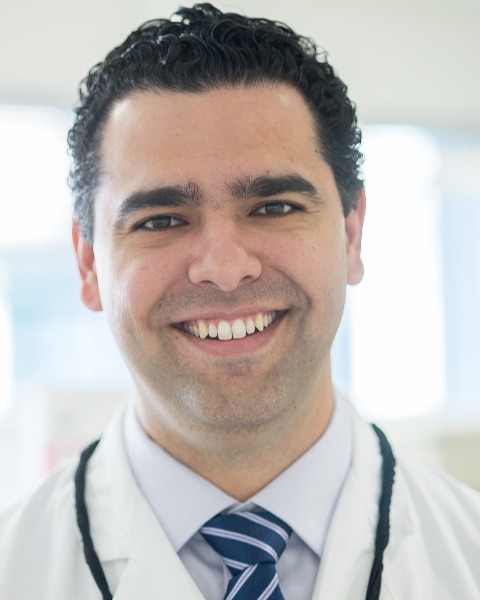
Gustavo Oliveira
Speaker
Dr. Gustavo Oliveira is an Assistant Professor and Graduate Program Director of Operative Dentistry & Biomaterials at the University Of North Carolina Adams School of Dentistry. He earned his Doctor of Dental Surgery degree from the Santa Catarina Federal University, Brazil, and continued to practice in the realm of operative and esthetic dentistry before moving to the United States. Dr. Oliveira received his master’s degree and a Certificate in Operative Dentistry from the Operative Dentistry Graduate Program at the University of North Carolina at Chapel Hill. He also completed a clinical fellowship in the Department of Operative Dentistry at the same institution. Dr. Oliveira joined the University of Louisville, Kentucky, in 2010 as a full-time faculty member, teaching and training pre-doctoral students in the areas of operative dentistry, esthetics, and biomaterials. In January of 2016, Dr. Oliveira was recruited by his alma mater, joining the Department of Operative Dentistry at UNC, this time as a faculty member. In 2017, Dr. Oliveira was selected by the American Academy of Operative Dentistry as the recipient of the Inaugural Rising Star Faculty Award. Dr. Oliveira currently holds a position of Graduate Program Director of Operative Dentistry & Biomaterials at UNC. Dr. Oliveira is a member of various professional organizations. He is a contributing author of the textbook Sturdevant’s Art and Science of Operative Dentistry, has published many scientific papers, and serves as a manuscript reviewer for several scientific publications. He is actively involved in research. Dr. Oliveira maintains a part-time intramural practice dedicated to restorative, implant, and esthetic dentistry.
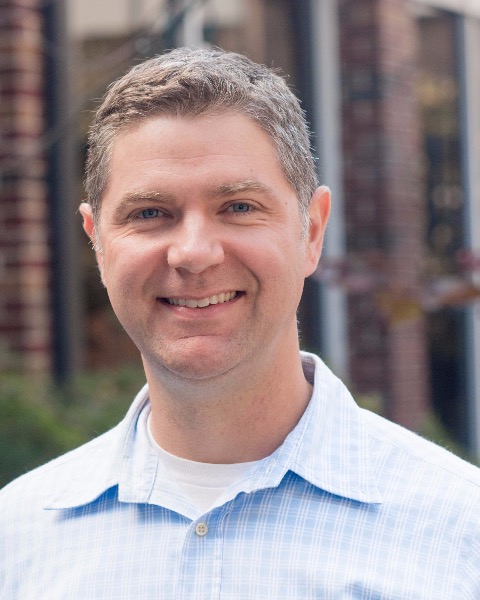
Brandon Schwindt
Speaker
Brandon Schwindt completed his undergraduate degree at the University of Oregon. He graduated from Oregon Health and Sciences Dental School and completed a Pediatric Dentistry Residency at the Medical University of South Carolina under Dr Ron Bell. He is a diplomate of the ABPD and currently holds the position of President Elect of the College of Diplomates of the American Board of Pediatric Dentistry. He served on Oregon's Board of Dental Examiners from 2009 to 2017, serving as the Oregon State Dental Board President in 2015. Dr Brandon was appointed to the Oregon Dental Board's Anesthesia Committee where he has continued to serve since 2007. He practices full time with his wife, Dr Kathryn Bowman, in their pediatric practice in Portland, OR.
-
Contains 3 Component(s), Includes Credits Recorded On: 05/23/2020
Instagram is an amazing social media platform for sharing your creativity, marketing your practice, and building community around your professional and personal interests. In this 1 hour learning lab, Dr. Karp, a pediatric dentist, a photographer, and a daily Instagram user, shares his content strategy and the lessons he has learned while growing an international following for his photography related account on the platform. Learning Objectives: Discuss 10 helpful practices for content sharing that increases engagement on the platform. Discuss the benefits and drawbacks of having a public account on this platform. Describe ways to find and build community with other creators on the platform.
Instagram is an amazing social media platform for sharing your creativity, marketing your practice, and building community around your professional and personal interests. In this 1 hour learning lab, Dr. Karp, a pediatric dentist, a photographer, and a daily Instagram user, shares his content strategy and the lessons he has learned while growing an international following for his photography related account on the platform.
Learning Objectives:
Discuss 10 helpful practices for content sharing that increases engagement on the platform.
Discuss the benefits and drawbacks of having a public account on this platform.
Describe ways to find and build community with other creators on the platform.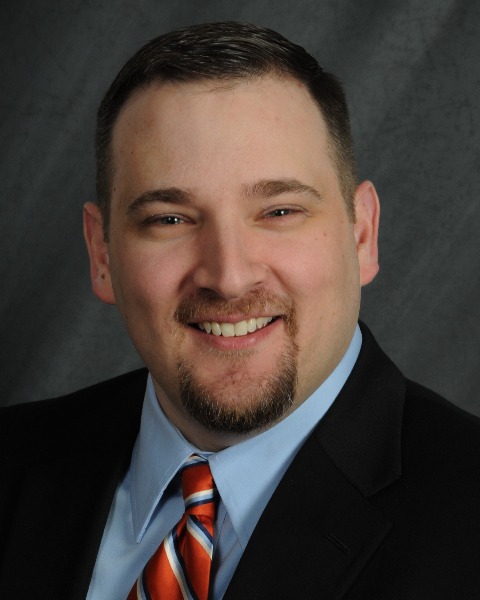
Jeff Karp
Speaker
Jeff Karp, D.M.D., M.S. is a husband, father of 3 daughters, pediatric dentist, residency program director, and an oral health advocate. Dr. Karp is a Diplomate of the American Board of Pediatric Dentistry and a Fellow of the American Academy of Pediatric Dentistry. Jeff is an avid audiobook and podcast listener, a coffee and chocolate enthusiast, an Apple fanboy, and a photographer and digital artist with an international following on Instagram.
-
Contains 3 Component(s), Includes Credits Recorded On: 05/23/2020
Join our speakers as they break down 6 topics that are aimed at early career dentists:: - Matching Child Temperament and Sedation Regimen - Dr. Sarat Thikkurissy - Common Oral Pathologies - Dr. Catherine Flaitz - Child Abuse & Neglect - Dr. Angela Sout - Hot Messes ~ Dental Erosion and Causes - Dr. Martha Ann Keels - Balancing Work & Life - Dr. E LaRee Johnson - Retirement Planning and Planning for the Future - Josh Miller
Join our speakers as they break down 6 topics that are aimed at early career dentists::
- Matching Child Temperament and Sedation Regimen - Dr. Sarat Thikkurissy
- Common Oral Pathologies - Dr. Catherine Flaitz
- Child Abuse & Neglect - Dr. Angela Sout
- Hot Messes ~ Dental Erosion and Causes - Dr. Martha Ann Keels
- Balancing Work & Life - Dr. E LaRee Johnson
- Retirement Planning and Planning for the Future - Josh Miller -
Contains 4 Component(s), Includes Credits Recorded On: 05/23/2020
Traditional operative treatment using different restorative materials, has been used for over a century to treat the dental destruction caused by dental caries. It is invasive, technique sensitive, costly, and requires significant cooperation from the patient. Many patients are unable to receive this treatment because they are too young, anxious, have medical conditions that limit their cooperation, or lack the resources to access care. The advent of new materials, concepts and products, have allowed the introduction of Minimal Intervention Approaches to manage caries lesions that allow us to give patients an alternative option. This presentation will discuss the use of Silver Diamine Fluoride, ITR/ART and the Hall Technique as Minimal Intervention Approaches in the management of caries in Pediatric Dentistry. Learning Objectives: 1. Differentiate the concepts of minimally invasive dentistry, minimal intervention approaches and personalized optimal interventions understanding the needs and advantages of these approaches. 2. Understand the scientific basis for current recommendations for SDF, ITR/ART and the Hall Technique as well as their indications, pros and cons. 3. Acquire the knowledge and techniques required to implement these approaches into clinical practice.
Traditional operative treatment using different restorative materials, has been used for over a century to treat the dental destruction caused by dental caries. It is invasive, technique sensitive, costly, and requires significant cooperation from the patient. Many patients are unable to receive this treatment because they are too young, anxious, have medical conditions that limit their cooperation, or lack the resources to access care. The advent of new materials, concepts and products, have allowed the introduction of Minimal Intervention Approaches to manage caries lesions that allow us to give patients an alternative option. This presentation will discuss the use of Silver Diamine Fluoride, ITR/ART and the Hall Technique as Minimal Intervention Approaches in the management of caries in Pediatric Dentistry.
Learning Objectives:
1. Differentiate the concepts of minimally invasive dentistry, minimal intervention approaches and personalized optimal interventions understanding the needs and advantages of these approaches.
2. Understand the scientific basis for current recommendations for SDF, ITR/ART and the Hall Technique as well as their indications, pros and cons.
3. Acquire the knowledge and techniques required to implement these approaches into clinical practice.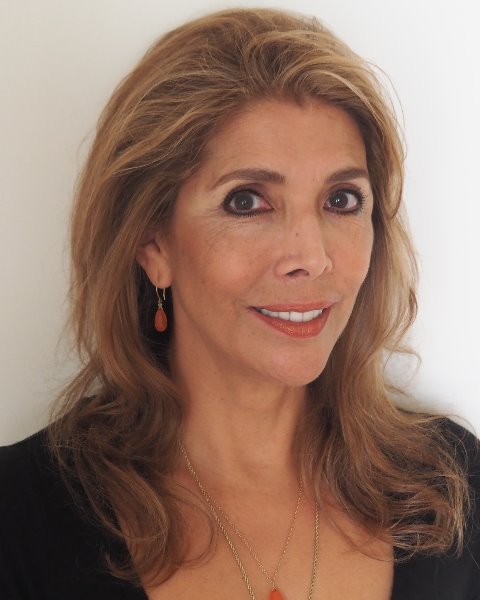
Yasmi Crystal
Speaker
Dr. Yasmi Crystal has a DDS degree from Universidad Tecnologica de Mexico (UNITEC), DMD from the University of Medicine and Dentistry of New Jersey (UMDNJ), Pediatric Dental specialty training from Eastman Dental Center, University of Rochester, and a MSc in Clinical and Translational Research from CTSI, New York University, School of Medicine.
Founder and senior specialist at Comprehensive Pediatric Dentistry in New Jersey and Clinical Professor of Pediatric Dentistry at New York University, College of Dentistry, she is a Diplomate and an examiner for the written and oral sections of the American Board of Pediatric Dentistry, member of the Editorial Board of Pediatric Dentistry Journal and a spokesperson and past trustee of the AAPD; presently a member for the Council on Scientific Affairs, incoming president for the Pediatric Oral Health Research Group of the International Association of Dental Research and Fellow of the American Society for Dental Esthetics, the American College of Dentists and the International College of Dentists.
Past member of the Board of Directors of the IAPD and Chair of their Scientific Committee. She is also a member of the Editorial Board of the Journal of the Latin American Society of Pediatric Dentistry (Revista ALOP) and a manuscript reviewer for several major journals including Pediatric Dentistry, JADA, IJPD and JOCPD.
As leader in inter-professional relations, she has worked as Oral Health consultant, speaker and preceptor for the AAP, NJAAP, and is a faculty member for the Family Practice MD program at Somerset Medical Center, NJ, with her clinic being a rotation site for family practice MD residents.
Dr. Crystal lectures to varied health care audiences in the US and abroad, and has published her research on numerous articles in peer reviewed scientific journals on topics of Caries Management, Risk Assessment and Minimal Intervention Approaches including SDF therapy.
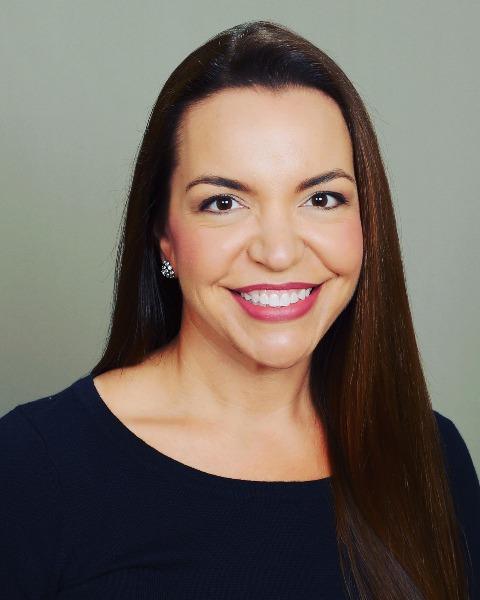
Jeanette Maclean
Speaker
Dr. Jeanette MacLean is a Diplomate of the American Board of Pediatric Dentistry, Fellow of the American Academy of Pediatric Dentistry, private practice owner, and mother of two. Dr. MacLean has become an internationally recognized advocate and expert on minimally invasive dentistry, appearing in newspapers, magazines, television, and continuing education lectures on this hot topic. Most notably, she was featured in the July 2016 New York Times article “A Cavity Fighting Liquid Helps Kids Avoid Dentists’ Drills,” which brought national attention to the option of treating cavities non-invasively with silver diamine fluoride.
-
Contains 3 Component(s), Includes Credits Recorded On: 05/23/2020
There are several misconceptions about soft tissue laser use for pulp application. In this learning lab I would like to give practical tips and show many of my cases on how I did pulp related procedures and minor surgeries in pediatric patients with minimal pain and needing local aesthetic shots. Learning Objectives: to understand the indications of soft tissue laser use in pulp related procedures Able to understand the laser machine settings for optimal and painless procedures work on patients using soft tissue laser with minimal pain and discomfort to the child
There are several misconceptions about soft tissue laser use for pulp application. In this learning lab I would like to give practical tips and show many of my cases on how I did pulp related procedures and minor surgeries in pediatric patients with minimal pain and needing local aesthetic shots.
Learning Objectives:
- to understand the indications of soft tissue laser use in pulp related procedures
- Able to understand the laser machine settings for optimal and painless procedures
- work on patients using soft tissue laser with minimal pain and discomfort to the child
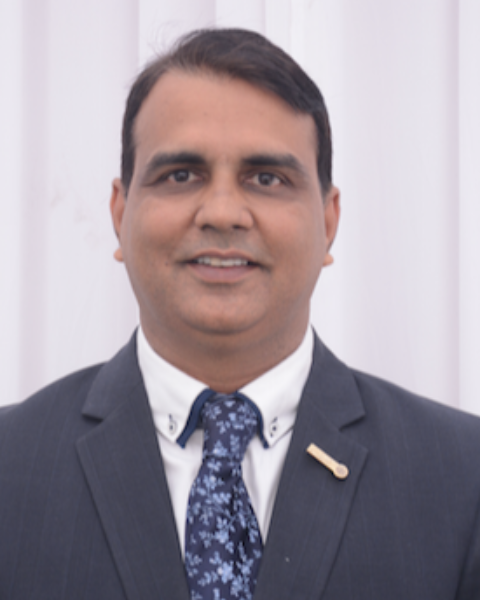
Vijay Mathur
Speaker
Chair, Pediatric Dentistry, AIIMS, New Delhi. Vice President- IADR India Division. Vice-President, Indian Society for Dental Traumatology, Honorary Treasurer- Indian Society of Pediatric and Preventive Dentistry and Editor in Chief - Journal of South Asian Association of Pediatric Dentistry. 69 publications, 230 international and National presentations. 32 research projects. Presently working on ECC, Dental trauma, Soft Tissue lasers, Biomedical Ethics
-
Contains 4 Component(s), Includes Credits Recorded On: 05/23/2020
3 separate topics, 45 minutes each: - The Diagnostic Challenge in Pediatric Dentistry Part VI - Dr. Juan Yepes - Soft Tissue CO2 Laser Surgery for the Pediatric Dental Patient from Birth through Adolescence from Suck Swallow Breath through Sleep Disordered Breathing - Martin Kaplan - Social Media Marketing for the Pediatric Dental Office - Jarod Johnson
3 separate topics, 45 minutes each:
- The Diagnostic Challenge in Pediatric Dentistry Part VI - Dr. Juan Yepes
- Soft Tissue CO2 Laser Surgery for the Pediatric Dental Patient from Birth through Adolescence from Suck Swallow Breath through Sleep Disordered Breathing - Martin Kaplan
- Social Media Marketing for the Pediatric Dental Office - Jarod Johnson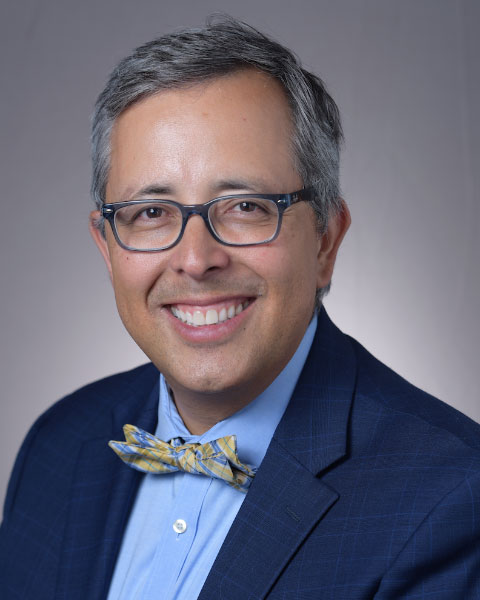
Juan Yepes
Speaker
Juan F. Yepes DDS, MD, MPH, MS, DrPH is an associate professor in the Department of Pediatric Dentistry at Indiana University School of Dentistry in Indianapolis, Indiana Juan F is also an academic scholar at the Department of Pediatric and Community Dentistry, University at Buffalo. Juan F. is a dentist (DDS) and a physician (MD) from Javeriana University at Bogota, Colombia. In 1999, Juan F. moved to the USA and attended the University of Iowa and the University of Pennsylvania where he completed a fellowship and residency in Oral and Maxillofacial Radiology and Oral Medicine respectively in 2002 and 2004. In 2006, Juan F. completed a Master in Public Health, and in 2011 a Doctoral Degree in Public Health both with emphasis in epidemiology at the University of Kentucky College of Public Health. In 2008, Juan F. completed a residency program in Dental Public Health at University of Texa A&M. Finally, Juan F. completed the residency program and Masters of Science degree in pediatric dentistry at the University of Kentucky in 2012.
Juan F. is Diplomate of the American Board of Oral Medicine, American Board of Dental Public Health, and American Board of Pediatric Dentistry. Juan F. was the section head of oral and maxillofacial radiology at the University of Kentucky for 6 years. Juan F. is an active member of the American Academy of Pediatric Dentistry, American Academy of Oral Medicine, American Academy of Oral and Maxillofacial Radiology, and American Dental Association. Juan F. is a fellow in dental surgery from the Royal College of Surgeons at Edinburgh, Scotland. Juan F. is in the editorial board of Oral Surgery, Oral Medicine, Oral Pathology, Oral Radiology. Finally, Juan F. research and teaching interest are in the area of radiation safety, oral medicine, oral radiology and oral pathology in children.
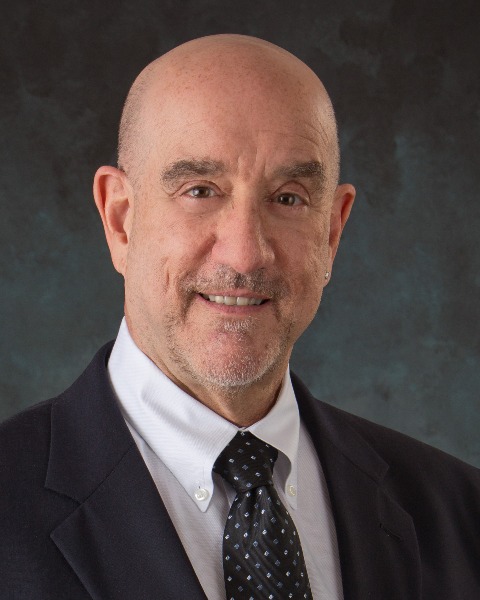
Martin Kaplan
Speaker
Martin A. Kaplan, D.M.D. is a practicing pediatric dentist with over 15 years of dental experience in laser dentistry.
In 2016 he became the first Pediatric Dental Specialist to obtain Diplomate status in the American Board of Laser Surgery and was elected to be the Director of Dental Laser Surgery. As of 2018 he has been a contributing educator in the American Laser Study Club.
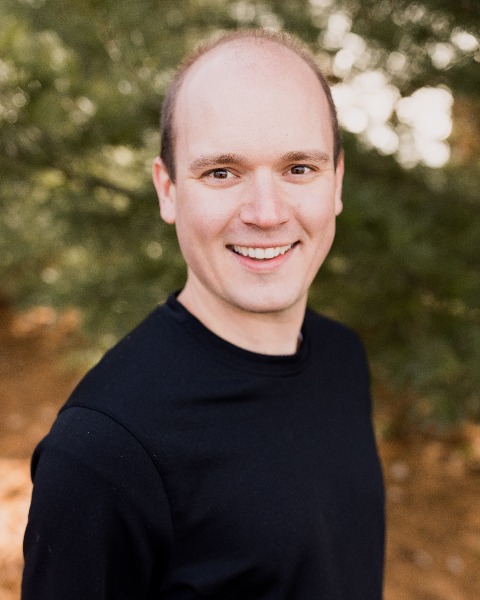
Jarod Johnson
Speaker
Jarod Johnson received his DDS degree from The University of Iowa College of Dentistry and his certificate in pediatric dentistry from the UNLV School of Dental Medicine. He is also a diplomate of the ABPD and an adjunct assisting professor at The University of Iowa. He practices in Muscatine, IA.
-
Contains 3 Component(s), Includes Credits Recorded On: 05/23/2020
Connecting with the new generations: the New pediatric dentist’s role as a communicator during and after CoVid 19 Pediatric dentists should know more about children’s emotions and behavior than any other health professional. Today with this new pandemic, the rules have changed. We are facing, economic, physical and emotional challenges. This presentation wil focus on the problems in sight. . How de we want to handle the future. Paralysis or action. Everybody tells us how to wash, what to do to stay clean of CoVid-19, BUT, nobody how to pay attention to our emotions. We need new tools to negociate this new reality. We will provide you with a tool box to be prepared for the future. New generations of children and parents are challenging the communication techniques that have been traditionally used by pediatric dentists. Social and technological changes have had a great impact on the new generations and affect our role as health care providers. With the advent of advanced technology and this physical distancing from the pandemic, major changes are taking place challenging the role that we will play in the future of children’s’ health and wellbeing. New generations are becoming more isolated and physical and emotional communications are being jeopardized. The human aspect is being replaced by technology. Humans in the not too distant future may become expendable and replaceable. In addition, parents acquire information via the internet and question the information we provide and our techniques of communication with their children. We need to rediscover our emotions and re-evaluate our communicative techniques. In this procedure we should not forget that our great advantage over technology is our ability to connect and emotionally communicate with other people. This is something that hopefully will not be replaceable. We will illustrate the major changes major changes we will face with the new generations of parents and children around the globe and how it affects us in the way we work in our offices. We will show the importance of bonding with parents and children, moving beyond the biological aspects and venturing into the psycho-socio and cultural issues. Knowing our children and adolescents will allow us to detect potential physical or emotional hazardous behavior. The first change that needs to be made is learning how different healthcare professionals interact with children and parents in different cultures and countries. When we bond we enter a danger zone of co-dependency, so we need to learn, know and set our limits. " Do we want to be keepers of the past to preserve the future? " Can I care, still allowing the other to be separate?" " Can I leave the comfortable me and enter the ever-changing other? Are we ready to take on this challenge? If not, will many health specialties survive the Twenty First century? Learning Objectives: Upon completion of this presentation, participants will learn how different cultures naturally assume a different way to communicate with parents and children.We will show the differences between Western individualism and the Eastern spirit of community, to adapt, adopt, mold and embrace new feelings favored from experience by our peers around the world to a greater mutual understanding of the other and its potential positive effect for the future of our profession. Pediatric dentists all over the world are experiencing economic, physical and emotional challenges from CoVid19 pandemic. We will show how to deal with them and adapt to our new reality. Technology is here to stay to make our lives more comfortable. No matter how fast technology advances, we cannot afford to lose our humanity. A full paradigm shift will be necessary. We will show what are our main advantages to survive the XXI century. Recent advances in technology and their uses and applications for behavior guidance Behavior management is a basic discipline and a major differential expertise of Pediatric Dentistry as a speciality. Behavior management has undergone several changes and modifications over time. To help children and parents, it is important to address the causes of behavioral problems faced by pediatric dentistry and to provide well-structured cognitive behavioral interventions that can optimize the outcome of behavior management. The cognitive pediatric dentistry paradigm plays a major role in behavior management, even more so nowadays, as we are expected to deliver painless dental treatment. To Prevent Dental Behavioral Management Problems, Technologies like 3D animation can be a powerful Communication Tool to shape children perceptions. These can also increase children sense of predictability and acceptability of dental treatments. Learning Objectives: Understand the Origins of Dental behavior management problems. Understand the Structure of a Cognitive Behavioral Intervention Model in pediatric dental patients (4-7 years old) for the prevention and management of Behavior Management Problems. Understand how a virtual tool can be applied in pediatric dentistry behavior management
Connecting with the new generations: the New pediatric dentist’s role as a communicator during and after CoVid 19
Pediatric dentists should know more about children’s emotions and behavior than any other health professional. Today with this new pandemic, the rules have changed. We are facing, economic, physical and emotional challenges. This presentation wil focus on the problems in sight. . How de we want to handle the future. Paralysis or action. Everybody tells us how to wash, what to do to stay clean of CoVid-19, BUT, nobody how to pay attention to our emotions. We need new tools to negociate this new reality.
We will provide you with a tool box to be prepared for the future.
New generations of children and parents are challenging the communication techniques that have been traditionally used by pediatric dentists. Social and technological changes have had a great impact on the new generations and affect our role as health care providers.
With the advent of advanced technology and this physical distancing from the pandemic, major changes are taking place challenging the role that we will play in the future of children’s’ health and wellbeing. New generations are becoming more isolated and physical and emotional communications are being jeopardized. The human aspect is being replaced by technology. Humans in the not too distant future may become expendable and replaceable. In addition, parents acquire information via the internet and question the information we provide and our techniques of communication with their children.
We need to rediscover our emotions and re-evaluate our communicative techniques. In this procedure we should not forget that our great advantage over technology is our ability to connect and emotionally communicate with other people. This is something that hopefully will not be replaceable.
We will illustrate the major changes major changes we will face with the new generations of parents and children around the globe and how it affects us in the way we work in our offices. We will show the importance of bonding with parents and children, moving beyond the biological aspects and venturing into the psycho-socio and cultural issues. Knowing our children and adolescents will allow us to detect potential physical or emotional hazardous behavior.
The first change that needs to be made is learning how different healthcare professionals interact with children and parents in different cultures and countries.
When we bond we enter a danger zone of co-dependency, so we need to learn, know and set our limits.
" Do we want to be keepers of the past to preserve the future?
" Can I care, still allowing the other to be separate?"
" Can I leave the comfortable me and enter the ever-changing other?
Are we ready to take on this challenge? If not, will many health specialties survive the Twenty First century?
Learning Objectives:- Upon completion of this presentation, participants will learn how different cultures naturally assume a different way to communicate with parents and children.We will show the differences between Western individualism and the Eastern spirit of community, to adapt, adopt, mold and embrace new feelings favored from experience by our peers around the world to a greater mutual understanding of the other and its potential positive effect for the future of our profession.
- Pediatric dentists all over the world are experiencing economic, physical and emotional challenges from CoVid19 pandemic. We will show how to deal with them and adapt to our new reality.
- Technology is here to stay to make our lives more comfortable. No matter how fast technology advances, we cannot afford to lose our humanity. A full paradigm shift will be necessary. We will show what are our main advantages to survive the XXI century.
- Recent advances in technology and their uses and applications for behavior guidance
Behavior management is a basic discipline and a major differential expertise of Pediatric Dentistry
as a speciality.
Behavior management has undergone several changes and modifications over time.
To help children and parents, it is important to address the causes of behavioral problems faced by
pediatric dentistry and to provide well-structured cognitive behavioral interventions that can
optimize the outcome of behavior management.
The cognitive pediatric dentistry paradigm plays a major role in behavior management, even more
so nowadays, as we are expected to deliver painless dental treatment.
To Prevent Dental Behavioral Management Problems, Technologies like 3D animation can be a
powerful Communication Tool to shape children perceptions. These can also increase children sense
of predictability and acceptability of dental treatments.Learning Objectives:
- Understand the Origins of Dental behavior management problems.
- Understand the Structure of a Cognitive Behavioral Intervention Model in pediatric dental patients (4-7 years old) for the prevention and management of Behavior Management Problems.
- Understand how a virtual tool can be applied in pediatric dentistry behavior management
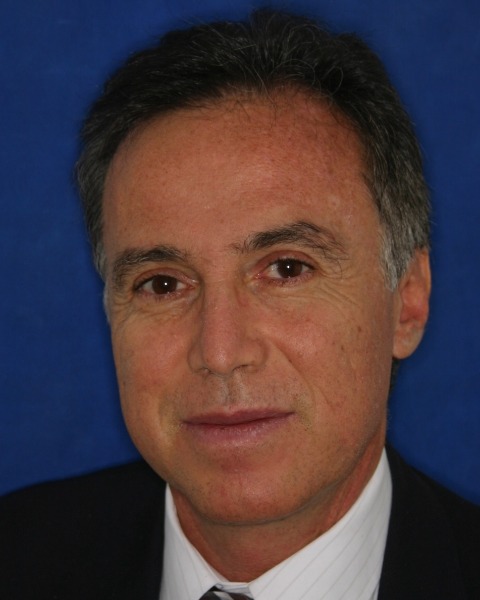
Andre Marc Saadia
Speaker
Dr. Marc Saadia specialized in Pediatric Dentistry at Tufts University with a Master of Science degree.
He specializes in Pediatric Dentistry, dentofacial orthopedics and orthodontics. Dr. Saadia was Editor-in-Chief of The Journal of Clinical Pediatric Dentistry and is currently co_ Editor-in-Chief. He has co-authored two books on Dentofacial Orthopedics, and is working on a third. He is a popular speaker presenting internationally.
He chaired the postgraduate and residency programs in pediatric dentistry at the Universidad Tecnológica de México and later became Director of Postgraduate programs at the same University.
He is a Diplomate of the American and Mexican Academies of Pediatric Dentistry and the Mexican Association of Orthodontists and was the President of The Mexican Academy of Pediatric Dentistry. He chaired the International Association of Pediatric Dentistry Congress held in Cancun, Mexico 2019.
He practices in Mexico City.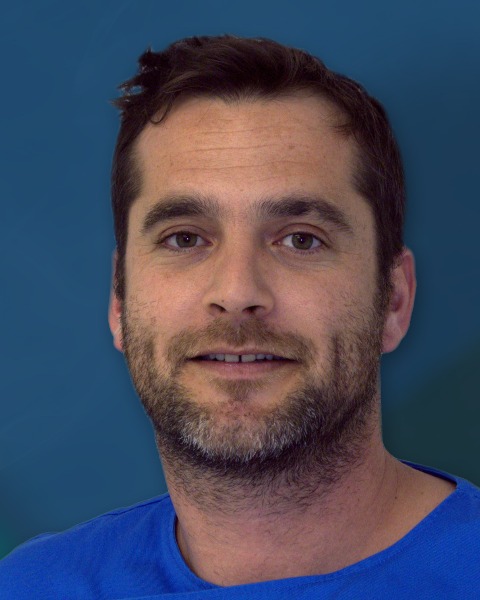
Antonio Silva
Speaker
Dr. Antonio Pedro Silva is a world renowned pediatric dentist. He obtained his dental degree from Universidade Fernando Pessoa - Oporto in 2007 and a specialty degree in pediatric dentistry from Oporto Dental Medical School (FMDUP-UP) in 2011.
Dr. Silva is founder and moderator of the Pediatric Dentistry Forum with over 38,000 members from all over the world. His specialty practice is in the city of Antwerp, Belgium. He was an invited speaker at the recent Biennial International IAPD Congress in Cancun (2019). He is a very popular speaker on behavior guidance and has lectured in several countries including: Italy, Spain; Portugal, Mexico, Russia, Egypt, Iraq, Bulgaria and Ukraine.
